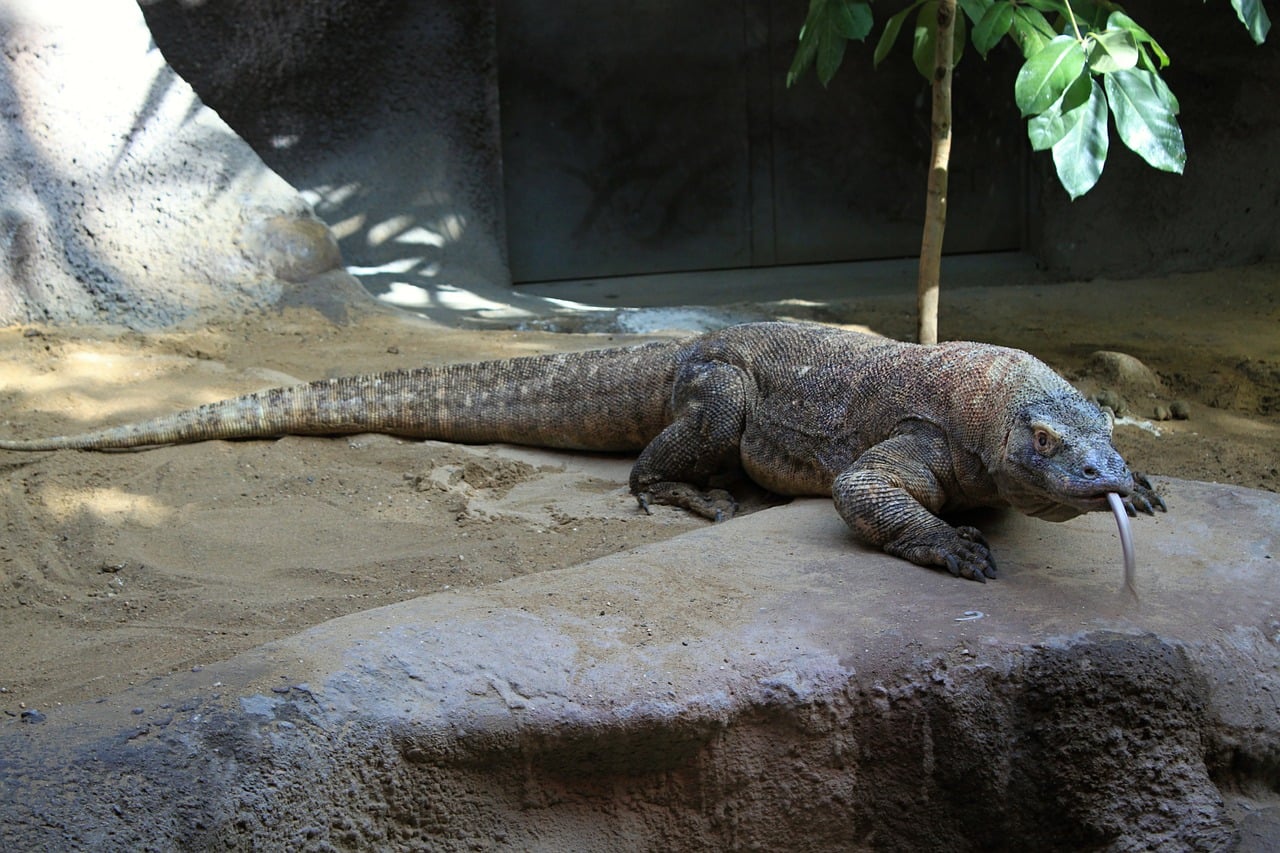Komodo dragons are the largest lizards in the world, and they often get into conflicts with other animals, including other Komodo dragons. Researchers wanted to learn more about these cold-blooded predators and see how the Komodo dragon genome affects their endurance against the deadly bites of other Komodo dragons.
Komodo dragons can grow to be as heavy as 200 pounds and sense their prey from up to 7.5 miles away. Even though they depend on heat and sunshine as cold-blooded predators, their metabolism can be as strong as that of mammals. Scientists from the Gladstone Institutes collaborated with UC San Francisco and Zoo Atlanta to learn more about the Komodo dragon genome and how the predeators ramp up their metabolism to enhance their speed and other abilities.
“We started the project nine years ago to look at how genomes evolve, but to do so, we needed the genome sequences first,” Gladstone Senior Investigator Benoit Bruneau, PhD said in a statement. “At the time, other groups had sequenced the turtle genome, snake and bird genomes, and the crocodile genome was in process, but the missing branch was the varanid lizards—the family to which Komodo dragons belong.”
“I went to Komodo Island years ago as a tourist, and I saw Komodo dragons in the wild there,” said Senior Investigator Katherine Pollard, Ph.D., the director of the Gladstone Institute of Data Science and Biotechnology. “I never would have guessed then that I would one day work on their genome. We didn’t even have a human genome at that time!”
The team studied the DNA of two Komodo dragons from Zoo Atlanta and reported their findings in the journal Nature Ecology & Evolution. They used blood samples from two Komodo dragons, Slasher and Rinca, to deliver a high-quality DNA sequence.
“Vertebrate genomes are big, and they contain many repetitive sequences,” Pollard said. “Most sequencing technologies only produce short stretches of sequence at a time. When those short stretches include repetitive elements, it’s impossible to know where they belong and what they connect to, making it hard to string them together.”
They compiled the sequence through a variety of computational tools that analyzed changes in the Komodo dragon genome and indicated how it adapts to new environment. While lizards are not known for engaging in a lot of physical activity, Komodo dragons are different.
“However, we know from working with Komodo dragons that they’re capable of sustained aerobic activity, which could be swimming, running, or walking extremely long distances,” said Joseph R. Mendelson III, Ph.D., director of research at Zoo Atlanta. “Our study showed us that the secret is in these mitochondrial adaptations to increase their cardiac output. This gives us an understanding of how these animals are able to do what we had been observing.”
Scientists also found that Komodo dragons share additional genes with other lizards. They found genes that can encode chemical sensors called vomeronasal receptors to be particularly interesting.
The team hopes to use the Komodo dragon genome to learn how genes affect the formation of vertebrate hearts and how that control affects their evolution. Future research also aims to answer this long-standing question: why do reptiles have three-chambered hearts while mammals have four?





